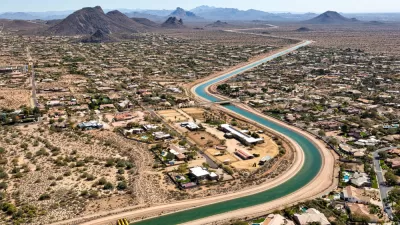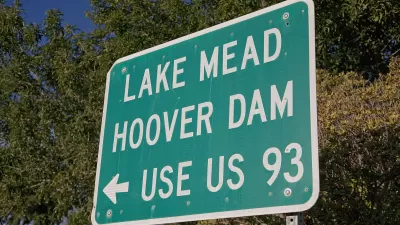The ancient irrigation networks lying below Phoenix could offer a solution to the sprawling desert city's water problems.
In this excerpt from his book "Elixir: A History of Water and Humankind", Brian Fagan explores how what is now Phoenix thrived off of the irrigation canals of the Hohokam people more than 500 years ago.
"Phoenix and its surrounding communities have paved over much of the Hohokam world. But the long-vanished farmers reappear with persistent frequency, under the foundations of modern buildings razed for new development, in the pathways of expanding interstates, even in backyard gardens. For the most part, the traces of their presence are inconspicuous, requiring careful dissection with spade and trowel. Only a few notable adobe structures still stand above ground, making it hard to believe that the Salt River Valley was the most populous and agriculturally productive valley in the Southwest before A.D. 1500. The land looks barren and utterly dry, yet it has fertile soils and lies near major river drainages. Between A.D. 450 and 1500, the Hohokam living near the Salt River adapted brilliantly to this seemingly desolate environment, refining their agriculture and water management from one generation to the next. Over more than 10 centuries, they built vast canal networks up to 22 miles long and irrigated tracts of arid land up to 70,000 acres in size."
FULL STORY: Insider: Phoenix's Looming Water Crisis

Alabama: Trump Terminates Settlements for Black Communities Harmed By Raw Sewage
Trump deemed the landmark civil rights agreement “illegal DEI and environmental justice policy.”

Planetizen Federal Action Tracker
A weekly monitor of how Trump’s orders and actions are impacting planners and planning in America.

The 120 Year Old Tiny Home Villages That Sheltered San Francisco’s Earthquake Refugees
More than a century ago, San Francisco mobilized to house thousands of residents displaced by the 1906 earthquake. Could their strategy offer a model for the present?

In Both Crashes and Crime, Public Transportation is Far Safer than Driving
Contrary to popular assumptions, public transportation has far lower crash and crime rates than automobile travel. For safer communities, improve and encourage transit travel.

Report: Zoning Reforms Should Complement Nashville’s Ambitious Transit Plan
Without reform, restrictive zoning codes will limit the impact of the city’s planned transit expansion and could exclude some of the residents who depend on transit the most.

Judge Orders Release of Frozen IRA, IIJA Funding
The decision is a victory for environmental groups who charged that freezing funds for critical infrastructure and disaster response programs caused “real and irreparable harm” to communities.
Urban Design for Planners 1: Software Tools
This six-course series explores essential urban design concepts using open source software and equips planners with the tools they need to participate fully in the urban design process.
Planning for Universal Design
Learn the tools for implementing Universal Design in planning regulations.
Clanton & Associates, Inc.
Jessamine County Fiscal Court
Institute for Housing and Urban Development Studies (IHS)
City of Grandview
Harvard GSD Executive Education
Toledo-Lucas County Plan Commissions
Salt Lake City
NYU Wagner Graduate School of Public Service





























